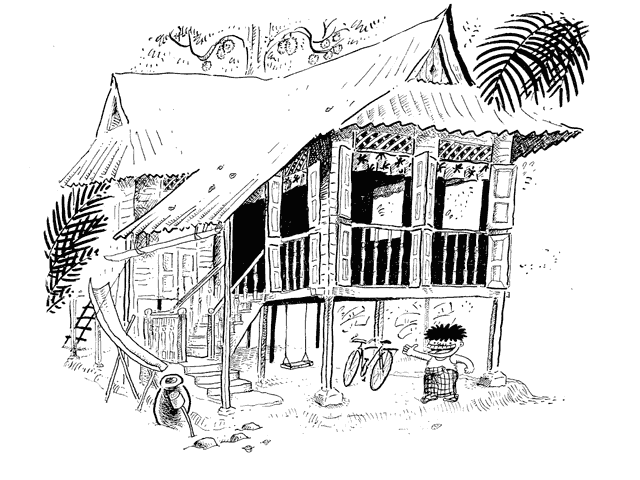 There is no quintessential rice field, just as there is no quintessential rice. There are commonalities such as submerged flats, but the real variation lies in surroundings. They nestle between Japanese mountains and bridges to nowhere, Malayan jungles, and terraced fields in many other regions.
There is no quintessential rice field, just as there is no quintessential rice. There are commonalities such as submerged flats, but the real variation lies in surroundings. They nestle between Japanese mountains and bridges to nowhere, Malayan jungles, and terraced fields in many other regions.Unable to faithfully reproduce either, one solution is a combination. This is not without difficulty. Terraces and railways do not mix, and lighting appropriate for one may not be so for another. Making something generic means cutting corners.
 So, much care has been taken to isolate reproducible elements and place them where their interfaces are less jarring (mostly in the corners).
So, much care has been taken to isolate reproducible elements and place them where their interfaces are less jarring (mostly in the corners). This is far easier in video games than in landscapes. When appreciating paintings you can change your objective position - you are always looking outside-in - and so can always step back and look at the 'big picture'. In a game, however, you are looking inside-out. Your focus is limited. Changing perspective within a video game often requires in-game travel to another location. This is not only more immersive, it also enables control over what is visible at any moment. You may have to work on the inside and outside of the house, but at least you don't have to present both views at once.
This is far easier in video games than in landscapes. When appreciating paintings you can change your objective position - you are always looking outside-in - and so can always step back and look at the 'big picture'. In a game, however, you are looking inside-out. Your focus is limited. Changing perspective within a video game often requires in-game travel to another location. This is not only more immersive, it also enables control over what is visible at any moment. You may have to work on the inside and outside of the house, but at least you don't have to present both views at once. Common across Asia is rural nostalgia. The heartland, the Furusato, the Kampung. Indeed, the house in my map is based heavily on Lat's Kampung Boy house. Also common across Asia is a recent history of post-colonial modernisation. I think the two are related. The agrarian past is often viewed as a devil-you-know. Okay, they didn't have headcrabs, but I'm sure you'll agree that the best way to stop romanticising the countryside is to live there.
Common across Asia is rural nostalgia. The heartland, the Furusato, the Kampung. Indeed, the house in my map is based heavily on Lat's Kampung Boy house. Also common across Asia is a recent history of post-colonial modernisation. I think the two are related. The agrarian past is often viewed as a devil-you-know. Okay, they didn't have headcrabs, but I'm sure you'll agree that the best way to stop romanticising the countryside is to live there.BanGenKei 7 of 12: Paddy field and Kampung house.
Comments
Post a Comment